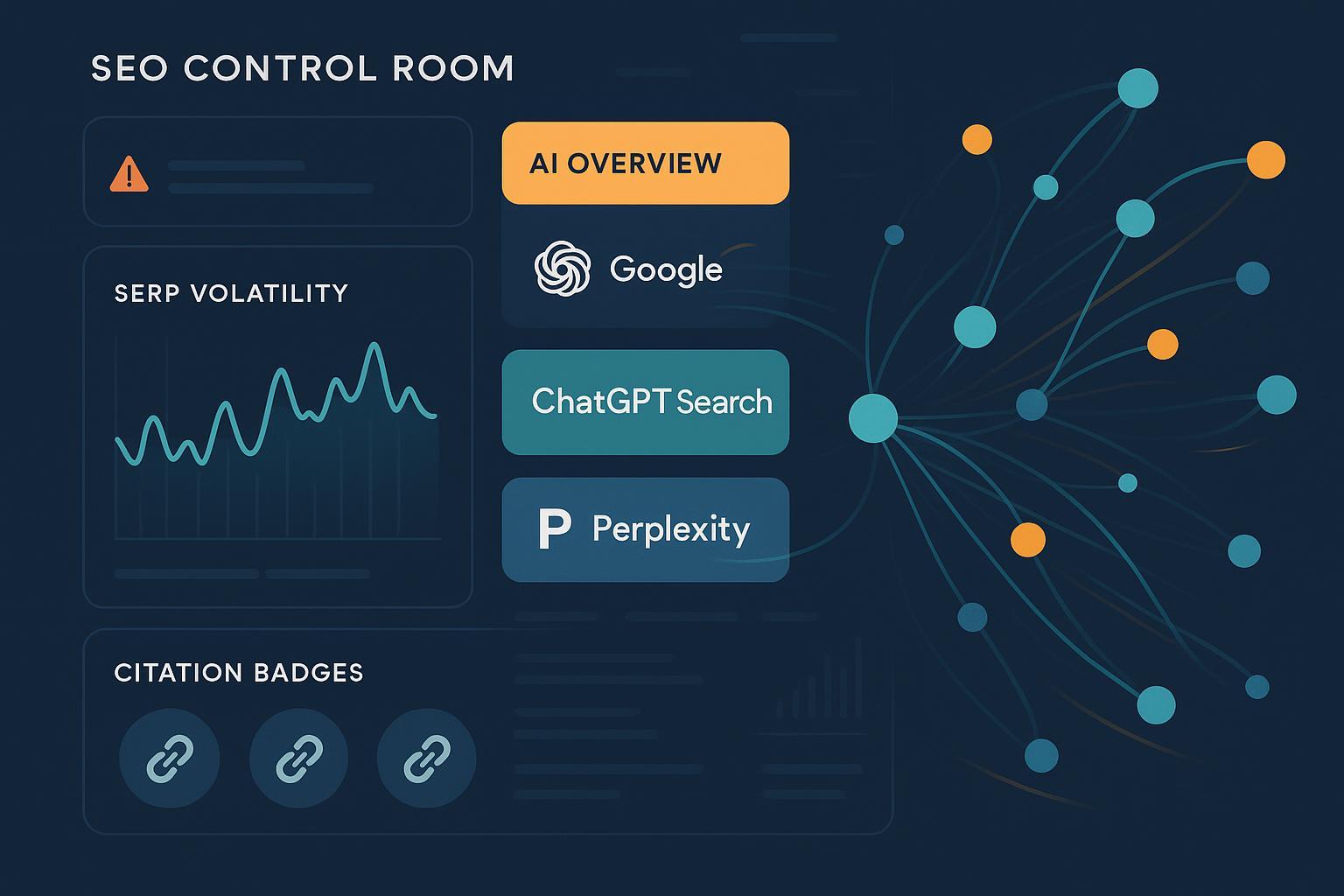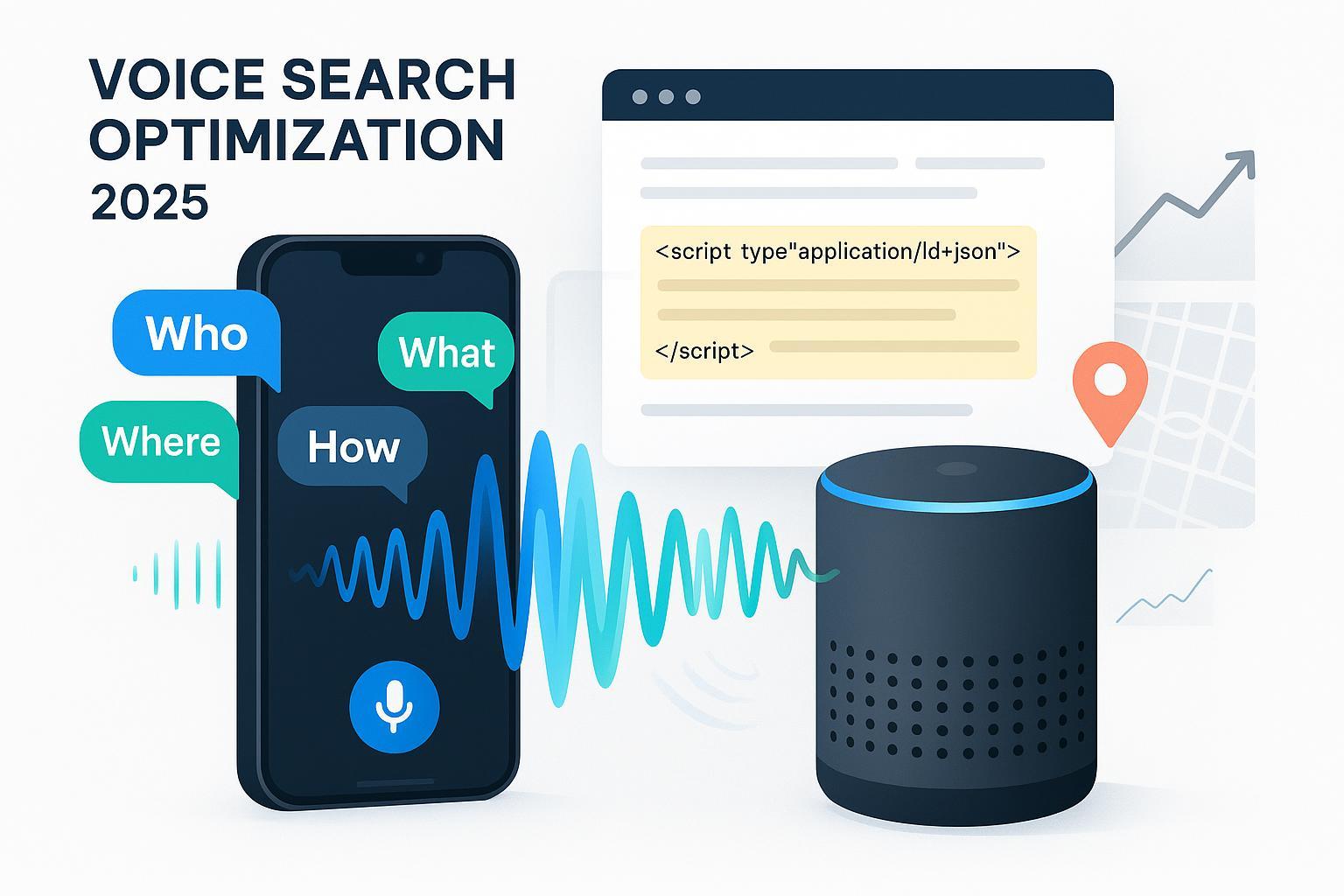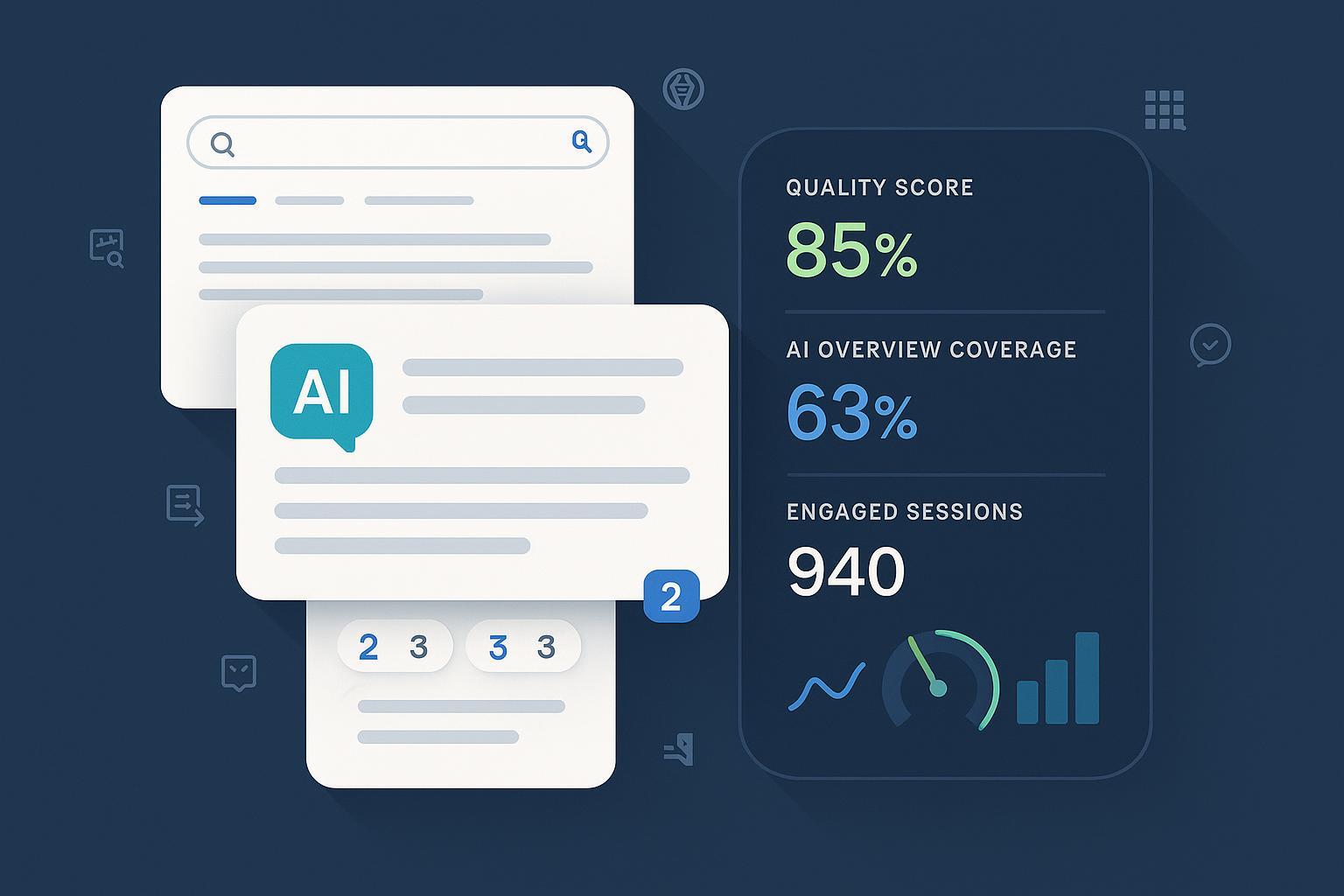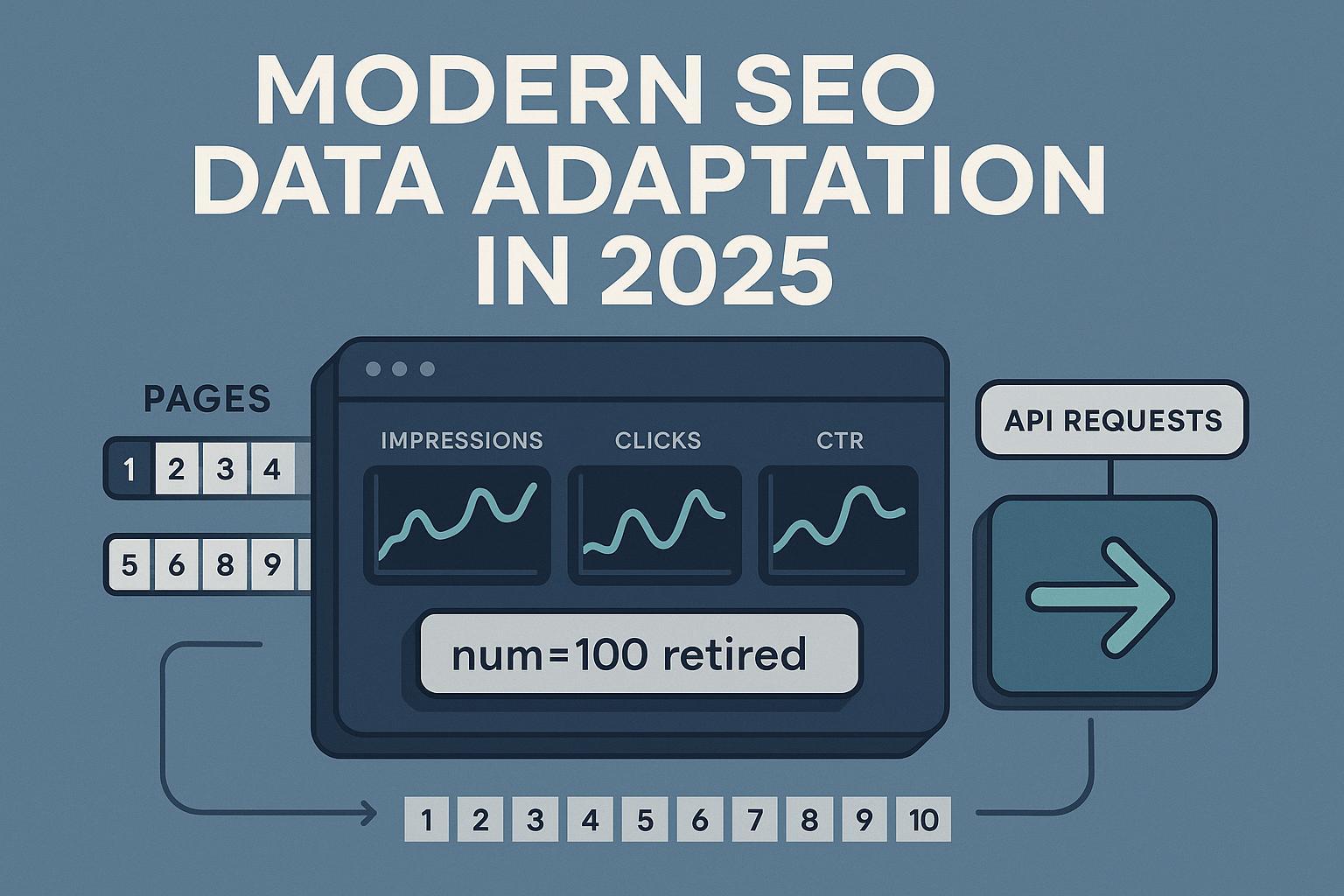Real-Time SEO Adaptation: Machine Learning Best Practices for Professionals
Discover actionable machine learning workflows for real-time SEO adaptation. Master monitoring, predictive analysis, and technical optimization across Google, ChatGPT, and Perplexity.


If you manage search visibility in 2025, you’ve felt the whiplash. Google’s AI Overviews, ChatGPT Search, and Perplexity can reroute attention overnight, shrinking traditional CTR while elevating sources cited inside synthesized answers. The upside: machine learning lets us detect, predict, and respond in near real time—without burning teams out.
This is the workflow I’ve refined across multiple brands: instrument the right signals, model volatility, trigger precise content and technical changes, and measure outcomes with discipline. It’s practical, not theoretical—and it keeps you adaptive when the ground moves.
What the data says (and why it matters)
- AI Overviews prevalence rose sharply in early–mid 2025. For context, Semrush reported that 13.14% of queries triggered AI Overviews in March 2025 in the U.S, up from 6.49% in January (Semrush AI Overviews study, 2025). Other datasets show different rates, so treat this as directional.
- CTR impact varies by query type, but declines are common. Ahrefs found a 34.5% average click drop for top-ranking pages when AI Overviews appear (April 2025) (Ahrefs study on CTR impact). Industry analyses corroborate ranges from the mid-teens to ~37%.
- Overlap between AIO citations and organic results is substantial but not total. In October 2025, Search Engine Journal summarized findings that about 54% of AIO citations match organic rankings—meaning there’s room to earn citations even if you’re not #1 (SEJ overlap summary, 2025).
Google’s own guidance is consistent: build helpful, original content that demonstrates experience and authority; avoid scaled, low-value automation. See Google Search Central’s “AI features and your website” (2025) for how AI Overviews & AI Mode surface content, and “Top ways to succeed in Google’s AI search experiences” (2025) for practical criteria (AI features and your website; Succeeding in AI Search). Also review the 2024–2025 spam policies on scaled content abuse—mass automation without user benefit is a risk (Spam policies for Google Web Search).
Principles that keep ML useful (not harmful)
- Human-in-the-loop is non-negotiable. ML surfaces anomalies and opportunities; editors and subject-matter experts ensure accuracy, originality, and user value. Search Engine Journal’s E-E-A-T guidance remains relevant in 2025—publish with first-hand experience and clear credentials (SEJ on E-E-A-T).
- Avoid scaled content abuse. Use automation to assist, not replace, thoughtful creation. Batch generation demands strict guardrails.
- Optimize for multi-platform citations. Google AIO, ChatGPT Search, and Perplexity each cite sources; structure your content to be crawlable, verifiable, and answer-focused.
- Measure what matters. Visibility, citation share, CTR deltas, sentiment shifts, and recovery time are more useful than rank positions alone.
The 7-step real-time adaptation workflow
Here’s the playbook I run when volatility spikes or answers start stealing clicks.
1) Instrumentation and alert thresholds
- Connect Google Search Console and web analytics, and wire up your rank tracker(s). Layer volatility monitors:
- Semrush Sensor: treat scores >7 (on 0–10 scale) as a high-volatility trigger; segment by industry/country (Semrush visibility guidance).
- SISTRIX Visibility Index: track week-over-week deltas to localize impact areas; leverage their AI search measurability guidance for 2025 contexts (SISTRIX measurability of AI search).
- Create automated alerts: when volatility + a visibility drop occur, triage within 24 hours.
2) Cross-platform monitoring of citations and answers
- Track which pages and entities are cited in Google AI Overviews, ChatGPT Search, and Perplexity.
- For ChatGPT Search, ensure pages are authoritative, answer-concise, and crawlable; OpenAI’s 2024 announcement makes clear it shows links to relevant web sources in responses (Introducing ChatGPT Search).
- For Perplexity, responses include clickable citations by default (per the 2025 API changelog); prioritize verifiable, well-structured content and community credibility (Perplexity API changelog).
- Practical example: consolidate multi-platform brand mentions, citations, and sentiment in one dashboard so teams can act on shifts within hours. Use the Geneo platform’s real-time AI search visibility monitoring to see how your brand is referenced across ChatGPT, Perplexity, and Google AI Overviews (Geneo). Disclosure: We may have an affiliation with Geneo; recommendations are based on practical workflow fit.
3) Predictive analysis and triage
- Model anomalies: use ML clustering to group impacted queries by intent, entity, and topic. Score each cluster by business value and risk (e.g., revenue per visit × visibility delta).
- Forecast likely winners: Pages with strong E-E-A-T, clear answers, and supporting citations tend to recover faster.
- Assign owners within 24 hours; set 72-hour remediation targets for high-value clusters.
4) Rapid content adjustments (answer-friendly, verified)
- Create concise, verified answer sections (100–200 words) atop key pages; add FAQs that target specific conversational queries.
- Enrich with schema (FAQPage, HowTo, Article) where appropriate; validate and monitor for crawl errors.
- Use NLP tools (Surfer, Clearscope) for semantic coverage but keep editorial control. Google’s 2025 guidance emphasizes unique, non-commodity content—don’t just “fill the gaps.”
- Require human review for claim verification, source selection, and experience layers (examples, screenshots, credentials).
5) Technical remediation with ML guardrails
- Run automated audits daily during volatility: crawl anomalies, indexation issues, internal linking gaps, schema validation.
- Implement internal link updates to strengthen entity relationships and topical hubs—avoid excessive automation that creates thin pages.
- Watch for scaled content abuse risks and throttle batch updates; document rationale and user benefit for each change.
6) Community and citation activation
- Seed authoritative citations where experts congregate (Reddit, niche forums, professional communities). Provide clear, evidence-backed posts that link to your canonical resources.
- Follow a repeatable cadence and track impact on citation presence within answer engines. For a step-by-step approach to community-driven citations, see this guide to Reddit community workflows for AI search citations (Reddit community AI search citations best practices).
7) Measurement, iteration, and governance
- KPIs: visibility index delta, citation share within answers, CTR change where AIO appears, sentiment trend, recovery time to baseline.
- Cadence: daily check-ins during spikes; weekly retros where you log what worked/failed and adjust thresholds.
- Governance: define editorial sign-off, source standards, and rollback protocols; maintain a change log tied to outcomes.
Tooling snapshot: where ML fits (and where it doesn’t)
- Enterprise suites (BrightEdge, Conductor) help with real-time insights and content guidance, but confirm how they measure AI answer citations and multi-platform visibility using your own tests. Public case studies with quantified uplift tied to ML features are limited.
- Semrush provides volatility monitoring, site audits, and schema support—use Sensor signals to trigger your workflows.
- Content optimization tools (Surfer, Clearscope) are strong for semantic coverage; pair them with a rigorous human editorial layer.
- Multi-platform brand monitoring (e.g., Geneo example above) fills the cross-channel gap most SEO stacks miss: keeping tabs on AI-generated answers that cite or ignore you.
Common pitfalls and how to avoid them
- Over-automation: ML suggestions applied without editorial oversight can degrade quality and trigger spam policy issues. Keep a human checkpoint.
- Model bias and stale training: Validate facts and sources; avoid echoing outdated or biased material.
- Chasing ranks instead of outcomes: Prioritize visibility, citations, CTR, and conversions over vanity metrics.
- Ignoring platform differences: AIO heavily cites organic winners; ChatGPT Search and Perplexity emphasize verifiable, well-structured sources and community credibility. Tune content formats accordingly.
- No rollback plan: Always document changes and have a reversal protocol if metrics worsen.
Implementation checklist (use this on Monday mornings)
- Review volatility dashboards (Semrush Sensor, SISTRIX). If Sensor >7 and your visibility dropped, trigger the playbook.
- Pull a 7-day anomaly report: impacted queries/pages; cluster by intent and entity.
- Audit top 10 impacted pages: add concise answer sections and FAQs; validate schema.
- Verify sources and enrich with unique experience (examples, data, credentials). Editor sign-off required.
- Fix technical issues surfaced by crawls; update internal links to strengthen topical hubs.
- Activate community citations for 2–3 high-value topics this week; post evidence-rich threads.
- Track KPIs: visibility delta, citation share, CTR changes, sentiment; log learnings and adjust thresholds.
Final notes
Machine learning won’t replace seasoned judgment, but it will shorten your reaction time. Combine multi-platform monitoring, predictive triage, editorial rigor, and technical guardrails, and you’ll adapt faster than competitors when AI-driven search experiences shift. The brands that win in 2025 are the ones that respond within hours—not weeks—while preserving quality and trust.




